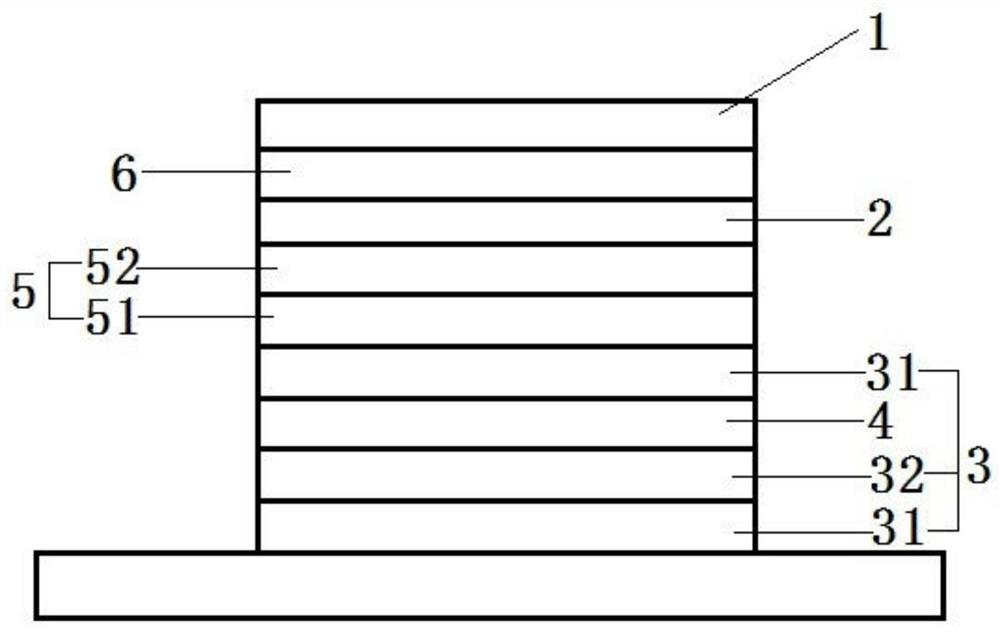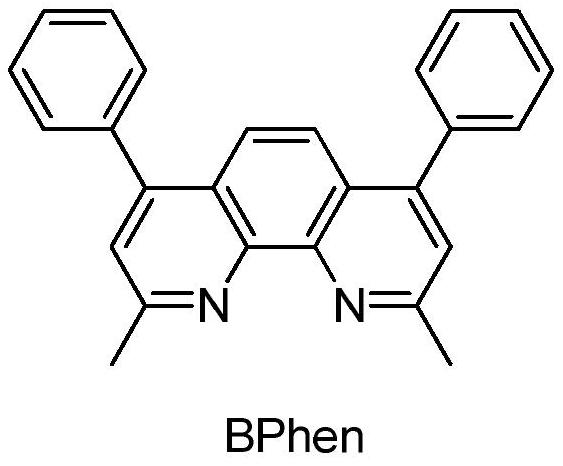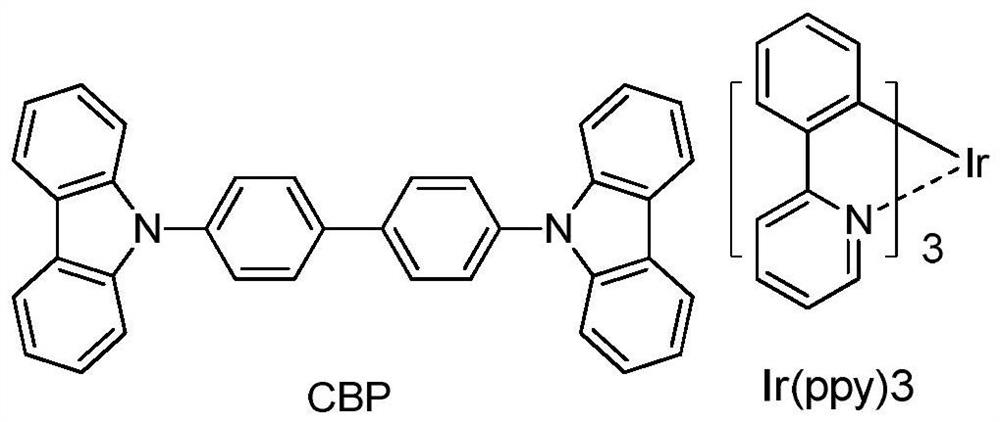A green light organic electroluminescent device
An electroluminescence, electromechanical technology, applied in the field of green light organic electroluminescence devices, can solve the problem of low light extraction efficiency, and achieve the effects of high luminous efficiency, improved external quantum efficiency, and improved light extraction efficiency
- Summary
- Abstract
- Description
- Claims
- Application Information
AI Technical Summary
Problems solved by technology
Method used
Image
Examples
Embodiment 1
[0050] This embodiment provides a green light organic electroluminescent device, such as figure 1 As shown, it includes a reflective electrode layer 1 , a second carrier functional layer 6 , a light emitting layer 2 , a first carrier functional layer 5 and a reflective electrode layer 3 which are stacked sequentially from top to bottom. Wherein, the reflective electrode layer 3 includes a reflective metal layer 32 and a transparent electrode layer 31, the Bragg reflector layer 4 is arranged on the upper surface of the reflective metal layer 32, and the upper surface of the Bragg reflector layer 4 and the lower surface of the reflective metal layer 32 are respectively A transparent electrode layer 31 is provided.
[0051] The reflective electrode layer 1 is a translucent cathode layer, which is an alloy layer formed by mixing Mg and Ag at a mass ratio of 9:1.
[0052] The second carrier functional layer 6 is an electron transport layer, and the material of the electron transpo...
Embodiment 2
[0078] This embodiment provides a green light organic electroluminescent device, which is different from the organic electroluminescent device in Embodiment 1 in that the first reflector layer in the Bragg reflector layer 4 is SiNx (X takes 1-2) SiNx The thickness d1=15nm, the refractive index η1=1.9.
[0079] The above-mentioned green organic light-emitting device complies with d*η=d1*η1+d2*η2+d3*η3+d4*η4+d5*η5=384nm, therefore, the thickness of the hole transport layer 52 d5=(384-1.9* 15-1.5*50-1.9*20-1.8*5) / 1.8=130nm.
[0080] The green organic electroluminescent device forms the following specific structure: ITO(20nm) / Ag(150nm) / SiNx(15nm) / SiO 2 (50nm) / ITO(20nm) / HAT(CN)6(5nm) / HTM081(130nm) / CBP:3%Ir(ppy)3(30nm) / Bphen(20nm) / Mg:Ag(9:1, 20nm ).
Embodiment 3
[0082] This embodiment provides a green light organic electroluminescent device, which is different from the organic electroluminescent device in Embodiment 1 in that the first reflector layer in the Bragg reflector layer 4 is SiNx (X takes 1-2) SiNx Thickness d1=15nm, refractive index η1=1.9; the second mirror layer in the Bragg mirror layer 4 is TiO 2 ,TiO 2 The thickness d2=50nm, the refractive index η2=2.2.
[0083] The above-mentioned green organic light-emitting device complies with d*η=d1*η1+d2*η2+d3*η3+d4*η4+d5*η5=384nm, therefore, the thickness of the hole transport layer 52 d5=(384-1.9* 15-2.2*50-1,76*20-1.8*5) / 1.8=110nm.
[0084] The green organic electroluminescent device forms the following specific structure: ITO(20nm) / Ag(150nm) / SiNx(15nm) / TiO 2 (50nm) / ITO(20nm) / HAT(CN)6(5nm) / HTM081(110nm) / CBP:3%Ir(ppy)3(30nm) / Bphen(20nm) / Mg:Ag(9:1, 20nm ).
PUM
| Property | Measurement | Unit |
|---|---|---|
| thickness | aaaaa | aaaaa |
| emission peak | aaaaa | aaaaa |
| thickness | aaaaa | aaaaa |
Abstract
Description
Claims
Application Information
 Login to View More
Login to View More - R&D
- Intellectual Property
- Life Sciences
- Materials
- Tech Scout
- Unparalleled Data Quality
- Higher Quality Content
- 60% Fewer Hallucinations
Browse by: Latest US Patents, China's latest patents, Technical Efficacy Thesaurus, Application Domain, Technology Topic, Popular Technical Reports.
© 2025 PatSnap. All rights reserved.Legal|Privacy policy|Modern Slavery Act Transparency Statement|Sitemap|About US| Contact US: help@patsnap.com



